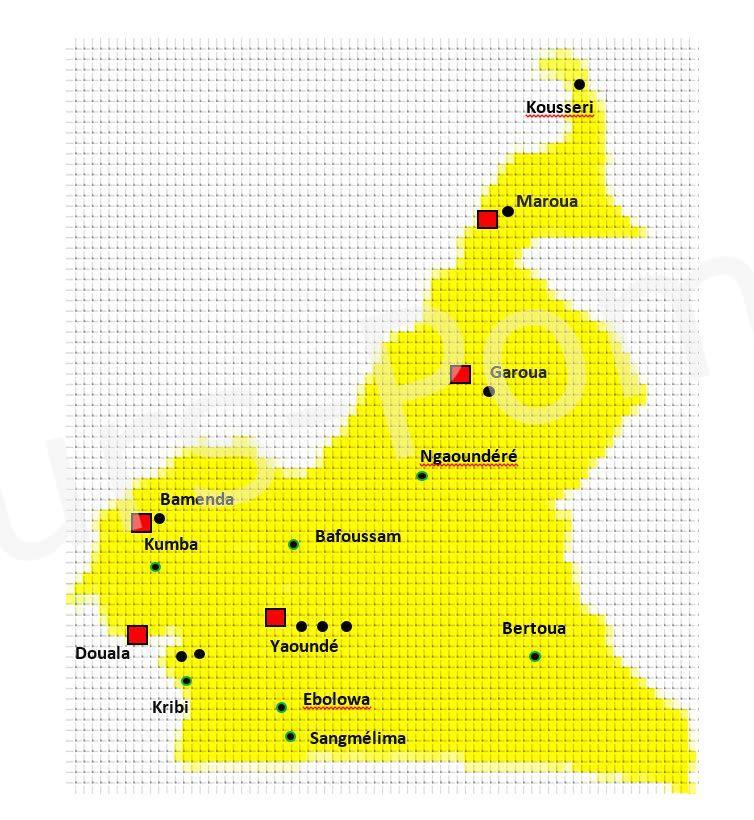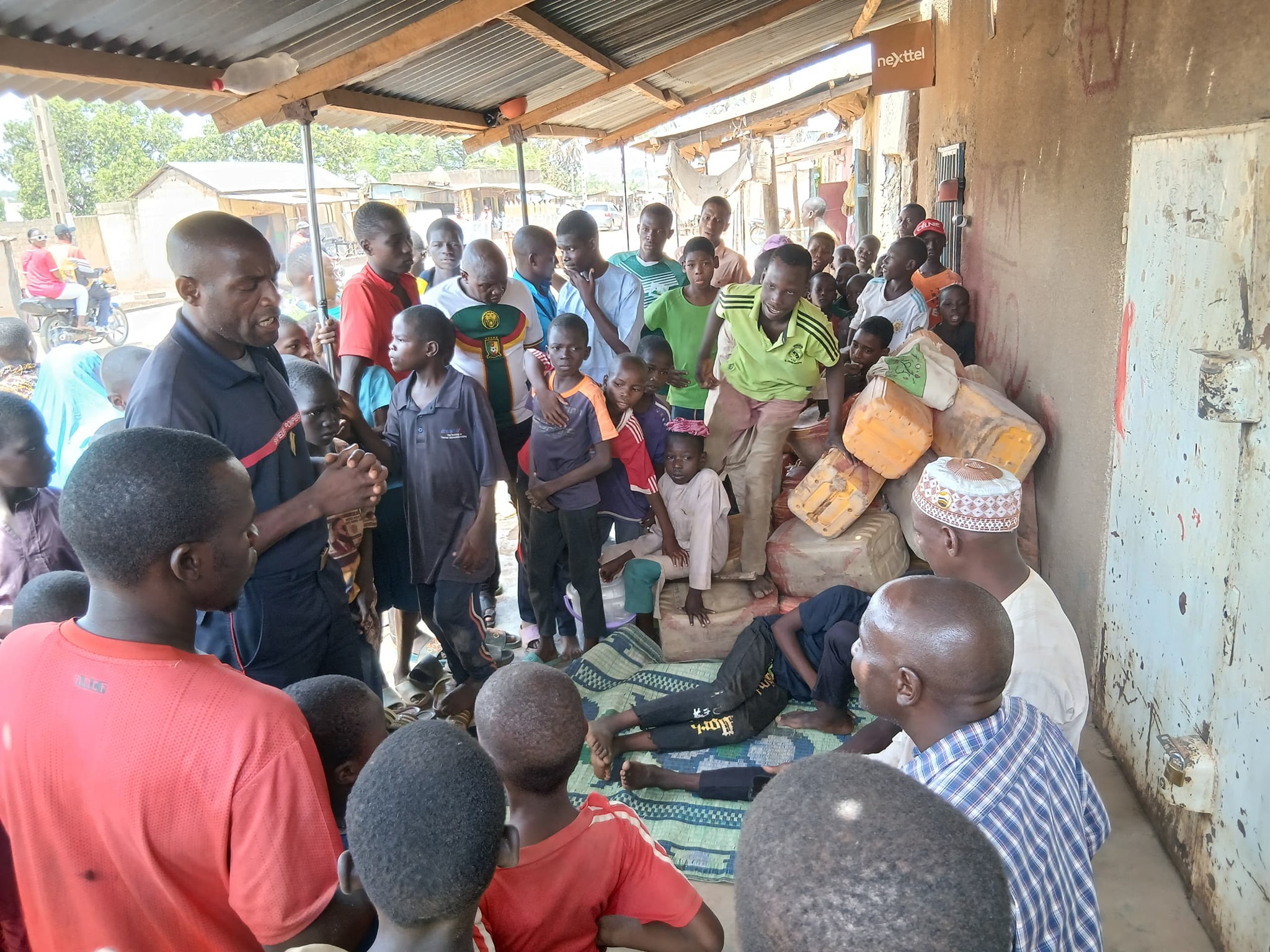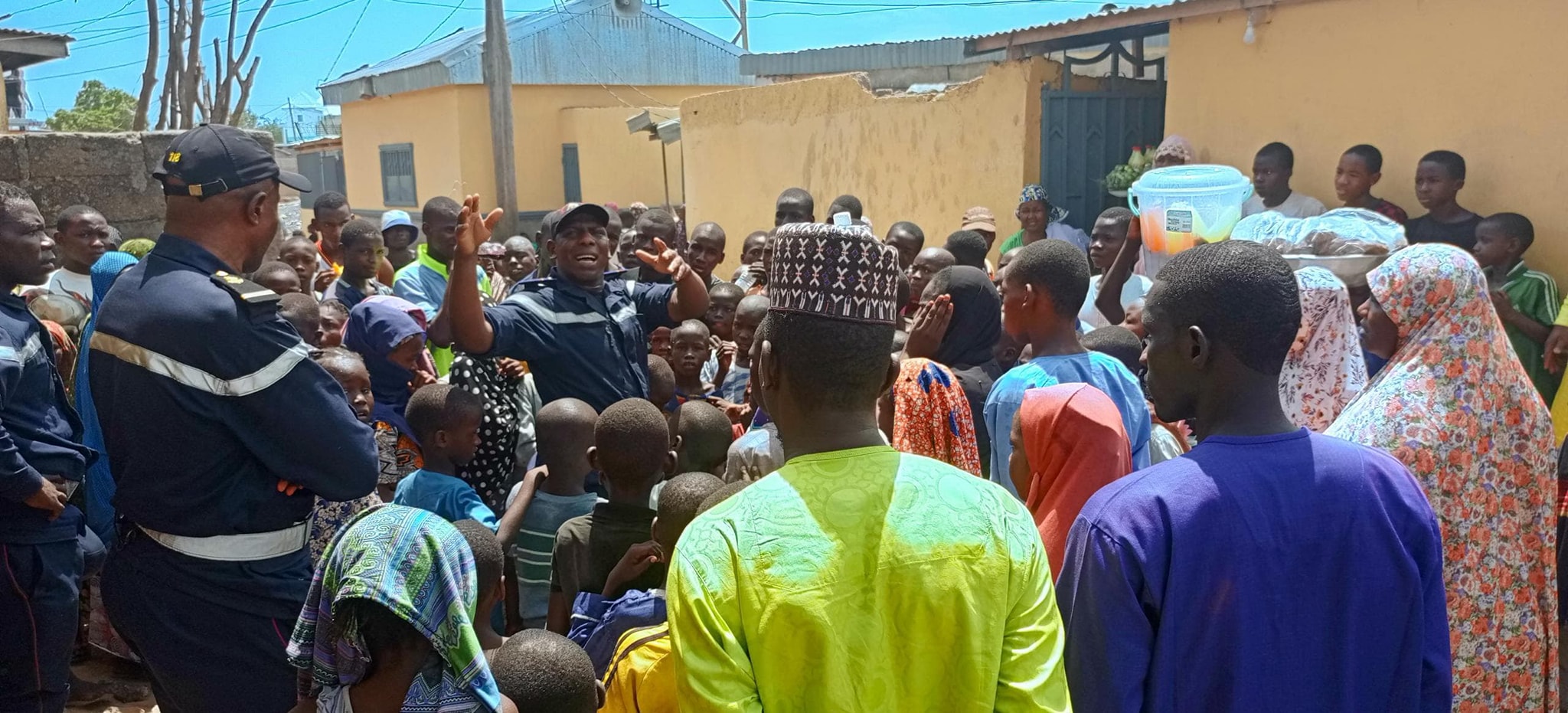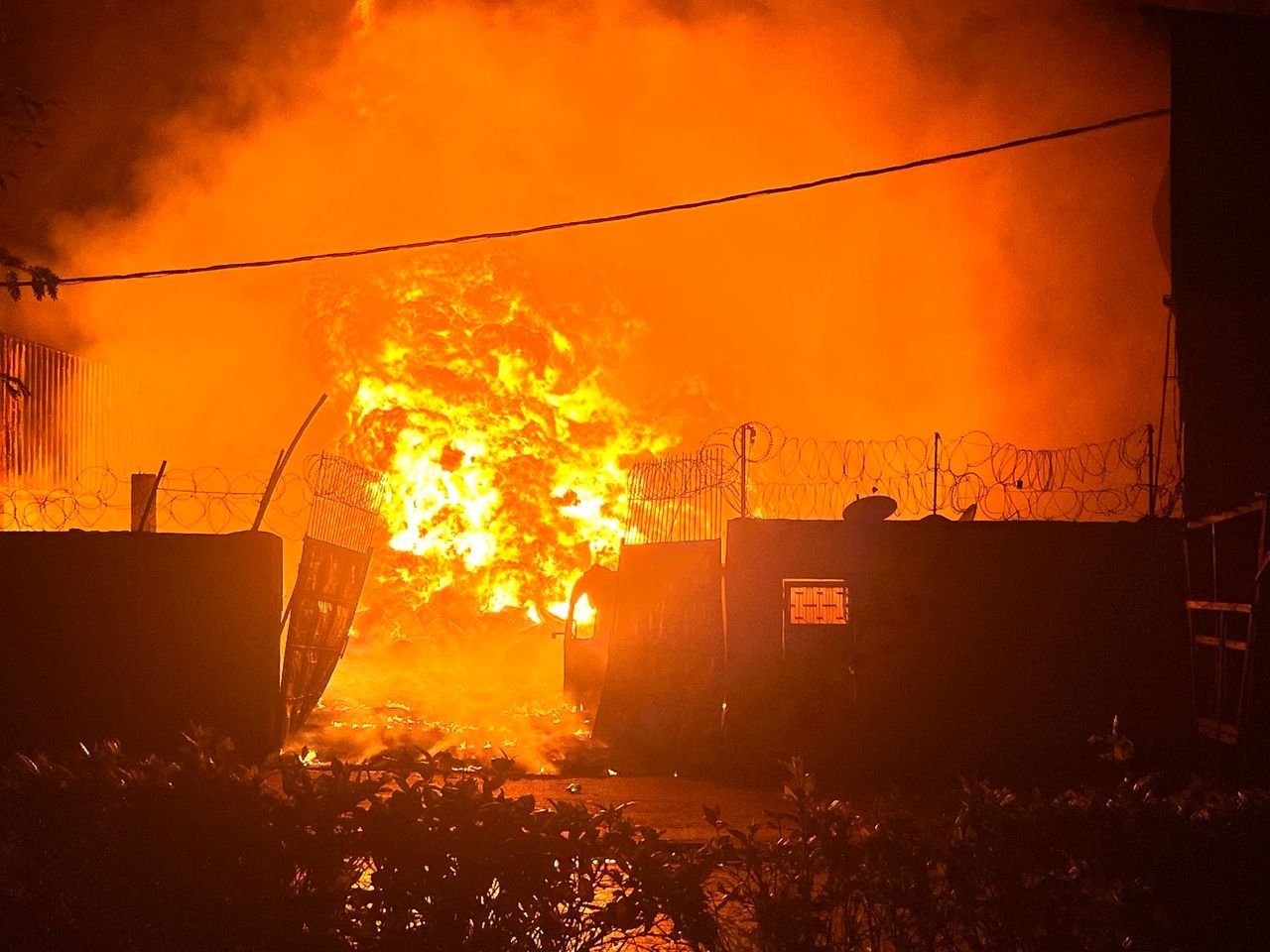Présentation of the NATIONAL FIRE BRIGADE
BACKGROUND
The first fire services in Cameroon, made up of volunteers and/or subjects, date back to the colonial era.
Following a series of fire outbreaks on coffee plantations and in coffee roasting factories in the town of Nkongsamba, the French colonial administration set up a fire station there. This was also done in Yaoundé, the political capital, Douala, the economic capital, and Garoua, the cotton-growing town. The resources used to fight fires included buckets of water, hand pumps and various tools.
In 1960, when Cameroon gained independence, the colonial fire and emergency services were placed under the authority of the mayors of the four towns, who were responsible for safety in their local areas.
Faced with the difficulties experienced by councils in carrying out their missions in the areas of preparation and command of operations, a new organisation, placed under the supervision of the Minister of Defence, replaced the municipal framework in 1986. Decree No. 86/286 of 05 April 1986 to create the National Fire Brigade then laid the foundation of this Corps and set out its missions, thus marking the beginning of the organisation of Fire Services in Cameroon. This new Corps inherited the infrastructure and intervention resources of the municipal fire services and incorporated its personnel. Four years later, Decree No. 90/054 of 30 November 1990 amended the 1986 decree, making the National Fire Brigade a joint military entity.
As part of the reform of the Defence Forces, Decree No. 2001/184 of 25 July 2001 confirmed the joint nature of the National Fire Brigade with the specific mission of Civil Protection. It was then organised around a headquarters, a training structure and territorial units placed under the direct authority of the Minister of Defence and essentially put at the disposal of the Minister of Territorial Administration (Ministry of Interior). New Administrations were involved in the development of the National Fire Brigade.
In 2004, three Firefighters Groups were created, following the boundaries of the areas of responsibility of the three Joint Military Regions, with three Fire Companies and eight Emergency Centres for a total of four hundred personnel.
In 2011, the Corps began to expand. New Units have been created and activated, increasing the number from eight to twenty. At the same time, the Human Resources budget has increased fivefold. Lastly, the fleet of response vehicles has been strengthened, with around 200 vectors in all categories.
Two other Firefighters Groups and twelve fire companies were created in 2018 to increase territorial coverage and bring people closer together.
Organisation
The National Fire Brigade comprises a Headquarters, Formations and Units.
The Headquarters is organised around three divisions, namely the Operational Division, which coordinates all operational activities, the Administrative and Logistics Division, which provides support for the Units, and the Health Division, which provides medical care for personnel and their families and acts on behalf of the people. The Commander of the National Fire Brigade is assisted by a Second-in-Command and a Chief of Staff. The latter coordinates the Corps’ Divisions and Health Service.
- The Administrative and Logistics Division:
Is responsible for personnel administration, the budget and logistic support for the Units. It comprises the Personnel and Chancellery Service, the Finance Service, the Technical Service and the Equipment and Supplies Service.
- The Employment Division:
Is responsible for coordinating the operational activities of the National Fire Brigade and for general studies. It comprises the Operations Service, the Training and Development Service and the General Studies and Fire Prevention Service.
- The Health Service:
Is responsible for forecasting and monitoring personnel health problems, equipment and the running of infirmaries. It comprises the Mail, Documentation and Archives Office, the Administrative and Financial Office and the Technical Office.
For interventions, the National Fire Brigade currently relies on:
- Five Firefighters Groups covering the boundaries of the Joint Military Regions. These Groups are responsible for the administration and deployment of Fire Units, which include Fire Companies and Emergency Centres.
The Group comprises:
- The Operations and Communications Coordination Office;
- The Administrative and Logistics Office;
- The Training and Development Office;
- The Fire Prevention Office;
- The Command Company and Services ;
- Fire Companies and Emergency Centres;
- The Specialised Medical Centre.
- A National Training Centre which is responsible for the training, retraining and development of Corps personnel, studies and research related to these missions and any other training mission assigned by the High Command.
The National Training Centre comprises:
- A Headquarters;
- A Training Department;
- A Command Company and Services ;
- An Emergency Centre and Training Companies.
- The Specialised Medical Centres and the Infirmaries, which are responsible for emergency medicine, medical care and follow-up of personnel, troop medicine and the provision of pharmaceutical products and specific equipment.
LOCATION OF NATIONAL FIRE BRIGADE STRUCTURES
Units of the National Fire Brigade are currently located in thirteen (13) divisions (subject to change):
The 10th Firefighters Group which covers the Centre, South and East Regions with Command Post in Yaoundé (Centre).

The 20th Firefighters Group which covers the Littoral and South-West Regions with Command Post in Douala (Littoral).

The 30th Firefighters Group which covers the North and Adamawa Regions with Command Post in Garoua (North).

The 40th Firefighters Group which covers the Far North Region with Command Post in Maroua.

The 50th Firefighters Group which covers the West and North-West Regions with Command Post in Bamenda (North-West).

The National Training Centre with its Emergency Centre in Kribi in the Ocean Division, South Region.

LEGAL FRAMEWORK
The regulatory framework which justifies the existence of the National Fire Brigade is made up of:
- Law No. 86/016 of 06 December 1986 on the general reorganisation of Civil Protection, which stipulates that Civil Protection consists of permanently ensuring the protection of people, property and the environment against the risks of serious accidents, calamities or disasters, as well as against the effects of these disasters. To this end, it includes prevention, protection and emergency response measures. The organisation of the services responsible for carrying out Civil Protection activities is laid down by decree.
- Decree No. 86/286 of 05 April 1986 on the creation and organisation of the National Fire Brigade. This decree places the new Institution under the supervision of the Minister of Defence and assigns it the missions of fighting fires and the after-effects of any other calamity, rescuing people and property in danger and participating in studies and preventive actions relating to its field of competence. To carry out these missions, the Units of the National Fire Brigade are placed under permanent requisition by the administrative authorities. They are also at the disposal of other ministries and the general public within the purview of the missions entrusted to them. The National Fire Brigade was organised around study and planning bodies, the National Firefighters Training Centre and the Territorial Fire Brigade Units.
- Decree No. 2001/184 of 25 July 2001 on the reorganisation of the National Fire Brigade. This text organises the National Fire Brigade around a Headquarters, the National Training Centre and the Territorial Formations and Units. The Commander of the National Fire Brigade (COM CNSP), who can now only be an Officer appointed by presidential decree, is assisted by a Second-in-Command and a Chief of Staff. In addition, it is specified that the Minister of Defence is responsible for the recruitment, training, discipline and administration of the military personnel of the National Fire Brigade and that its financial resources are included in the budgets of the Ministry of Defence, the Ministry of Territorial Administration and the Ministry of Town Planning, as well as receiving contributions from the local and regional councils hosting the National Fire Brigade Formations.
- Decree No. 2004/058 of 23 March 2004 on the creation and organisation of the Territorial Formations and Units of the National Fire Brigade specifies that the Formations and Territorial Units of the National Fire Brigade comprise Firefighters Groups, Fire Companies and Emergency Centres, Specialised Medical Centres and the National Training Centre.
- Decree No. 2018/156 of 21 February 2018 amending Decree No. 2004/058 of 23 March 2004 on the creation and organisation of the Territorial Formations and Units of the National Fire Brigade creates five Firefighters Groups, including one per Joint Military Region, as well as new fire companies, increasing the number from three to twenty.
ORGANISATIONAL CHART

Missions
Under permanent requisition, the National Fire Brigade, acting on behalf of the administrative authorities and local and regional councils, has the following missions:
- Combating disasters and their after-effects;
- Rescuing people and property in danger;
- Participating in disaster management;
- Participating in prevention and sensitisation studies and actions within its area of competence.
More specifically, the Units are responsible for:
- Firefighting;
- Combating disasters and their after-effects;
- Helping people in danger;
- Safeguarding property at risk;
- Participating in disaster management;
- Participating in prevention and sensitisation studies and actions within their areas of competence.
They also ensure compliance with regulations relating to:
- Housing development;
- Construction of residential buildings;
- Construction of high buildings;
- Construction of public facilities;
Construction of fire hydrant networks in fire stations and in the localities where they are found, and more generally, they participate in the study of safety challenges in various public facilities.



